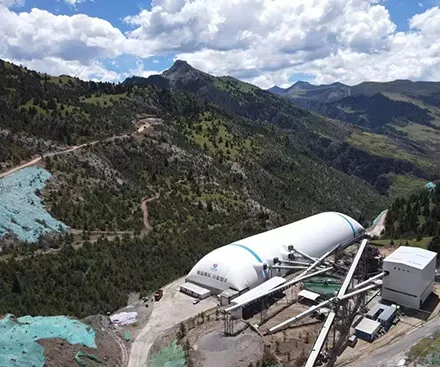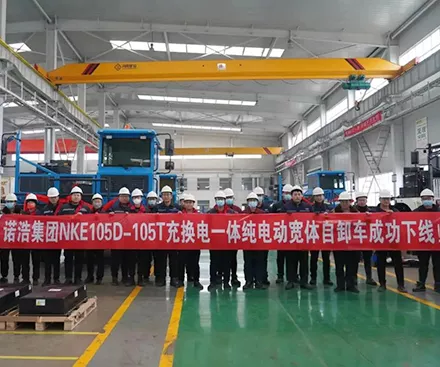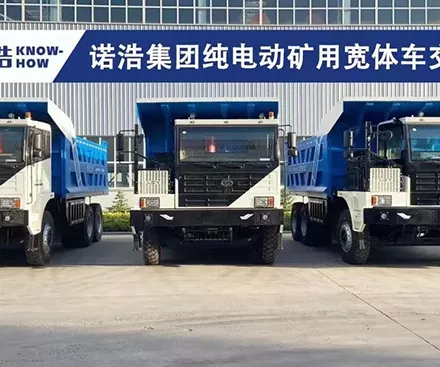Wheel loaders are vital in shaping our world, enabling the construction of towering skyscrapers and the excavation of vast mines. These robust machines are specifically designed to efficiently transport substantial loads, making them indispensable in various worksites. Nonetheless, their operation can pose serious risks if proper safety protocols are not observed. In this comprehensive guide, we will delve into the diverse types and applications of wheel loaders, thoroughly discuss their fundamental controls and operation, and offer crucial safety tips to ensure a secure and productive work environment.
Wheel loaders are available in different sizes and capacities to cater to the specific requirements of various industries. The three most common types of wheel loaders are compact, mid-size, and large wheel loaders.
Compact wheel loaders are smaller in size and are particularly well-suited for tasks in confined spaces. They are commonly used in landscaping, snow removal, and smaller construction projects.
Mid-size wheel loaders strike a balance between size and capacity, making them ideal for general construction and material handling tasks.
Large wheel loaders are powerful machines that are capable of handling heavy loads in industries like mining and quarrying. They efficiently move large amounts of material, making them indispensable for large-scale projects.
Wheel loaders have applications in a wide range of industries. In construction, they are used for loading and unloading materials, site clearing, and trenching. In mining, they assist in material handling, transporting ore, and loading trucks. In agriculture, they are essential for tasks such as moving crops, loading feed, and handling manure. Their versatility and ability to handle various materials make them indispensable in these industries.
Effectively operating a wheel loader requires a good understanding of its basic controls, which typically adhere to industry standards but may vary between manufacturers. The primary controls of a wheel loader generally include steering, lifting, and lowering functions.
- Steering: Most wheel loaders are equipped with articulated steering, allowing for improved maneuverability in confined spaces. Operators control the steering using a steering wheel or joystick, depending on the model and manufacturer’s guidelines.
- Lifting and Lowering: These functions govern the movement of the loader’s bucket.
It is essential for operators to receive proper training on wheel loader controls and operation in accordance with the manufacturer’s instructions and industry training programs. Training should encompass the safe use of controls, understanding weight limitations, and utilizing proper techniques for efficient machine operation. Adhering to these standards significantly reduces the risk of accidents and fosters a safe working environment.
Ensuring the safety of wheel loader operation is crucial, and following established guidelines such as those provided by the Occupational Safety and Health Administration (OSHA) in the United States can improve the reliability and effectiveness of the process. Here are some important safety tips to consider:
Operator Training: According to OSHA Standard 1926.1427, operators should receive comprehensive training on the specific model of wheel loader they will be using. This includes understanding proper use of controls, load capacities, and safe operating procedures.
Personal Protective Equipment (PPE): In line with OSHA’s guidelines, operators must wear appropriate PPE, such as hard hats, high-visibility vests, safety glasses, and steel-toed boots.
Buckets and Load Position: Following best industry practices, operators should keep the bucket in a low position when traveling to improve stability and visibility. Raising the bucket too high while moving can increase the risk of tipping.
Load Weight Consideration: It is crucial to adhere to the manufacturer’s specifications and safety standards to be aware of the maximum load capacity of the wheel loader and prevent overloading.
Checking Blind Spots: Operators should use mirrors and be vigilant about checking blind spots, as recommended in the manufacturer’s safety guidelines.
Operating wheel loaders comes with certain hazards that operators must be aware of and take steps to minimize, according to guidelines like OSHA Standard 1926 Subpart O and the manufacturer’s specific safety instructions:
Tipping: Wheel loaders can tip over if operated on uneven or unstable ground. Adherence to the manufacturer’s instructions and avoiding steep slopes can ensure proper balancing of loads and prevent tipping.
Rollovers: Sharp turns, uneven terrain, and excessive speed can lead to rollovers. Following ISO 12117-2: Rollover protective structures (ROPS) and following safe driving techniques can prevent such incidents.
Limited Visibility: The large size of machines can create blind spots. Operators must follow manufacturer guidelines and use mirrors effectively, exercising caution when maneuvering.
Pedestrian Safety: Operators must follow ANSI/ASSE A10.47-2009 guidelines to ensure pedestrian safety, being alert to the presence of other people and maintaining safe distances.
Fire Hazards: Regular inspection for potential fire hazards, following NFPA 505: Fire Safety Standard for Powered Industrial Trucks, can help prevent fires in environments with flammable materials.
Wheel loaders are essential machines utilized across various industries for a range of tasks. It is crucial to operate these machines safely to prevent accidents and ensure a productive work environment. By understanding the different types of wheel loaders, their basic controls and operation, and following essential safety tips, operators can mitigate risks and create a safer workplace. Regular maintenance, inspection, and awareness of common hazards further contribute to the overall safety and efficiency of wheel loader operations. Prioritizing safety through proper training, following safety guidelines, and creating a culture of safety in the workplace is crucial for operators and employers. With these measures in place, wheel loader operations can be conducted with confidence and efficiency, leading to successful outcomes in diverse industries.

Jul. 23, 2022
View More
Jun. 15, 2022
View More
Jun. 01, 2022
View More